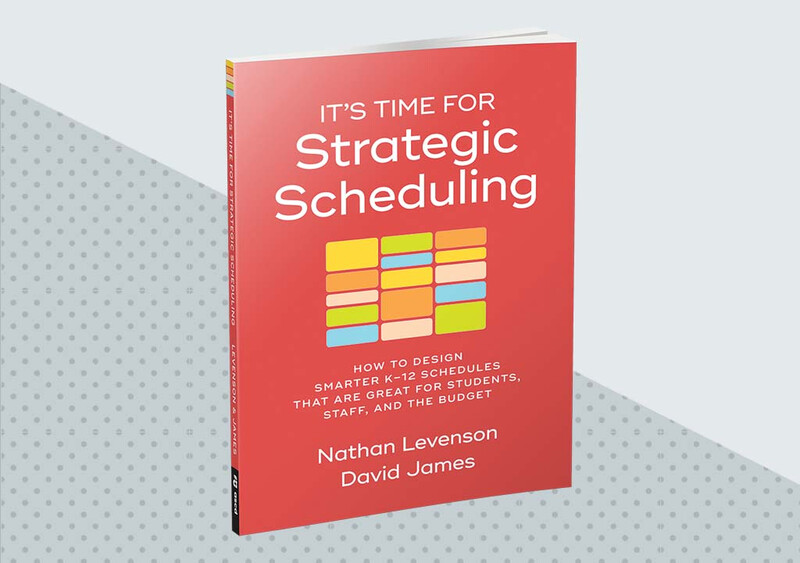While many students and teachers are eagerly looking ahead to summer break, school leaders and administrators are deep in the planning process for next year. April and May are prime scheduling season months—a critical window when decisions about time allocation will shape learning opportunities for the upcoming school year. We've compiled these essential strategies from ASCD authors Nathan Levenson and David James to help transform the often overwhelming scheduling process into an opportunity to enhance both student learning and teacher effectiveness.
All Grade Levels
1. Focus on Quality Time, Not Just More Time
As you finalize next year's schedule, resist the common urge to simply add more instructional minutes. Research consistently shows that additional time alone doesn't drive learning—it's the quality of that time that matters.
Consider this tale of two middle schools:
- School A provided 90 minutes of daily math instruction for all students plus a 30-minute afternoon "flex" block with mixed-content support.
- School B offered 45 minutes of daily math for all students, with struggling students enrolled in an additional 45-minute intervention taught by content-strong math teachers using the same curriculum.
Despite School A technically offering more math minutes, School B's students significantly outperformed their peers. Why? Because School B provided targeted, high-quality intervention rather than simply more minutes.
Spring Action Step: Audit your draft schedule now. For each block, ask: "Is this time being used optimally for the students who need it most?" If you're building in intervention blocks, ensure they're staffed by content experts and aligned with core instruction.
Elementary Level
2. Schedule as a School, Not by Classroom
Especially at the elementary level, resist the "fill in the blanks" approach where individual teachers determine when to teach core subjects. This leads to coordination nightmares for specialists and interventionists.
Instead, take a whole-school approach that:
- Staggers when key blocks like literacy, math, and intervention happen across grade levels
- Allows specialists to concentrate on one grade at a time
- Ensures no students miss core instruction to receive intervention services
Spring Action Step: Map out core instructional blocks for every grade level on a single visual schedule. Identify points of misalignment and adjust now, before teacher expectations are set for fall.
3. Create Micro-Schedules for Core Subjects
Simply allocating 90 minutes for literacy isn't enough. Without guidance, one 1st grade teacher might spend 20 minutes daily on phonics while another spends just 5 minutes twice weekly.
Strategic schools create "micro-schedules" that break down instructional blocks. Here is what a 1st grade literacy block micro-schedule might look like:
Spring Action Step: Convene your literacy and math experts to develop grade-specific micro-schedules that reflect your priorities and context. This guidance will be invaluable for new teachers and will ensure instructional consistency.
Secondary Level
4. Schedule Precisely to Enrollment
At the secondary level, address staffing challenges by scheduling more precisely to actual enrollment. This frees up "hidden" capacity without hiring additional staff.
Practical approaches include:
- Setting clear class size targets and minimum enrollment requirements
- Alternating low-enrollment electives by quarter, semester, or year
Spring Action Step: Compare your preliminary course requests with staffing allocations. Identify courses that could be consolidated or offered in alternating terms. Communicate these decisions now to manage student and parent expectations.
5. Optimize Within Your Current Schedule Model
Contrary to popular belief, there's no single "best" schedule model. Research hasn't conclusively identified a correlation between specific schedule models and student achievement. What matters most is making your priorities come alive within your existing structure.
For example, one high school had these priorities:
- Allow for community internships and partnerships
- Improve math outcomes through targeted intervention
- Build stronger student-teacher relationships
They accomplished all three without abandoning their traditional seven-period schedule by:
- Keeping their consistent daily schedule to facilitate community partnerships
- Adding targeted math intervention courses by slightly increasing class sizes elsewhere
- Piloting a weekly 30-minute advisory with 9th grade before expanding schoolwide
Spring Action Step: Identify your two to three top priorities for next year's schedule. For each, list specific changes you can make within your current schedule model before considering a wholesale change.
It’s Time for Strategic Scheduling
A school schedule is like a symphonic orchestra—it only works well when it's well-coordinated and led by a skilled conductor. As you finalize your fall schedule this spring, remember that strategic scheduling isn't about finding more time or staff, but about orchestrating your existing resources more effectively.
The most successful schedules are never static. They evolve based on student needs, staff feedback, and school priorities. Start with these five strategies, and you'll be well on your way to creating a schedule that serves as a powerful tool for both student learning and teacher effectiveness.
This article draws on insights from It's Time for Strategic Scheduling: How to Design Smarter K-12 Schedules That Are Great for Students, Staff, and the Budget (ASCD, 2023) by Nathan Levenson and David James and previous blog posts “Busting Three Myths About Secondary School Schedules” and “Designing Strategic Elementary Schedules.”
It's Time for Strategic Scheduling
An accessible guide to creating schedules that amplify school and district priorities, support best practices in teaching and learning, heighten student engagement, and enhance equity.









